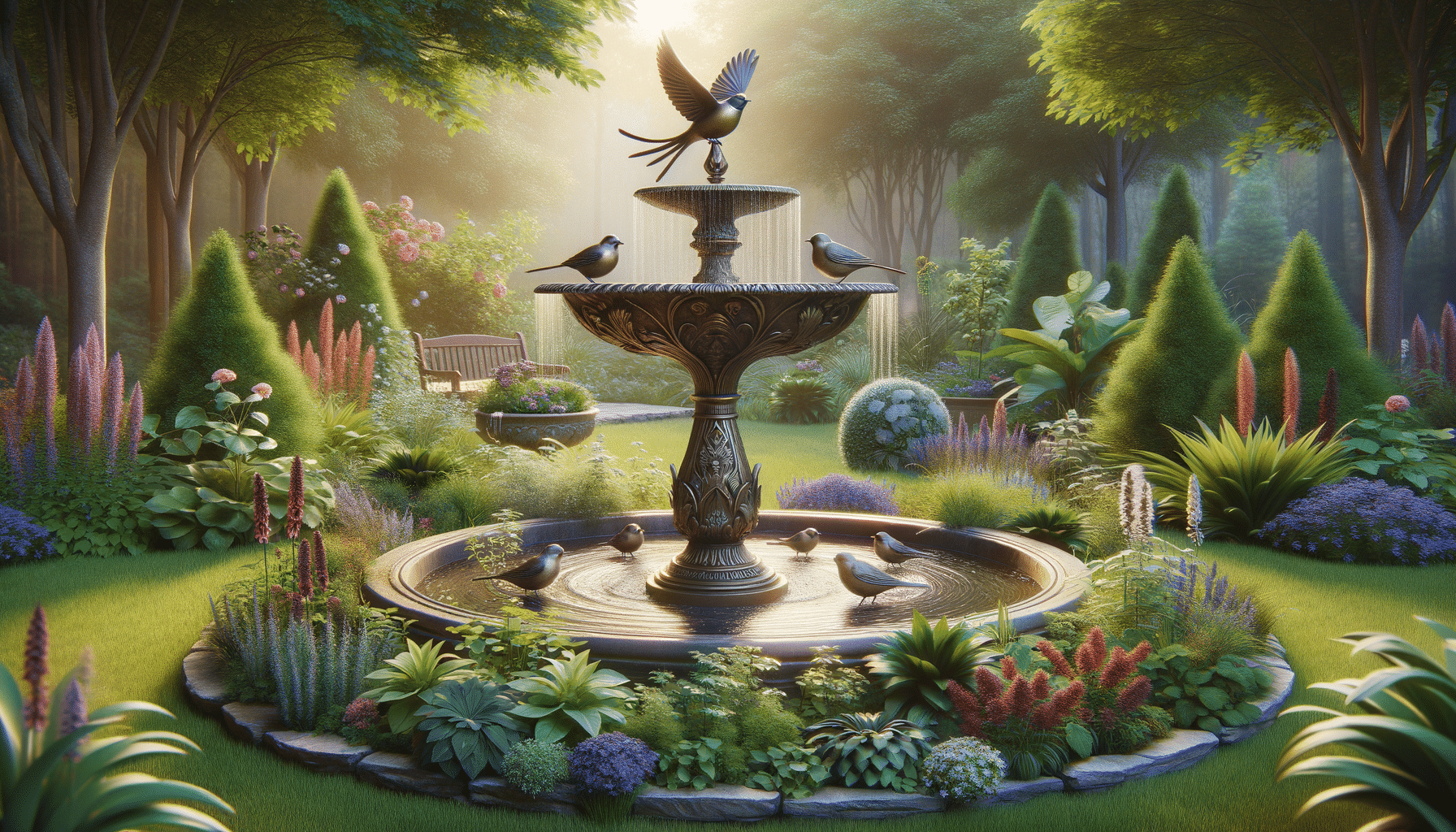
Discover Peaceful Garden Moments with a Bird Bath Fountain
The Charm of Bird Bath Fountains
Bird bath fountains are more than just decorative pieces in a garden. They serve as a sanctuary for birds, offering them a place to drink, bathe, and socialize. The gentle trickle of water not only attracts birds but also creates a serene atmosphere, making it a perfect addition to any garden. These fountains can be found in various designs and materials, ranging from classic stone to modern metal, allowing them to blend seamlessly into any outdoor setting.
One of the main benefits of having a bird bath fountain is its ability to attract a wide variety of bird species. The sound of flowing water is irresistible to birds, drawing them in from afar. This not only provides an opportunity for birdwatchers to observe different species but also supports local wildlife by providing a crucial water source. Additionally, the presence of birds can enhance the ecological balance of your garden by controlling pests naturally.
When choosing a bird bath fountain, consider factors such as size, material, and maintenance requirements. Larger fountains can accommodate more birds, while smaller ones may be suitable for compact spaces. Materials like stone and ceramic offer durability, while resin and metal provide lightweight alternatives. Regular maintenance, such as cleaning and refilling, ensures the fountain remains a healthy environment for birds.
Enhancing Garden Décor with Water Features
Incorporating water features into garden décor can transform an ordinary outdoor space into a tranquil retreat. The sound of water has a calming effect, making it an ideal component for creating a peaceful environment. Water features come in various forms, including fountains, ponds, and waterfalls, each offering unique aesthetic and auditory experiences.
Fountains are a popular choice for garden décor due to their versatility and ease of installation. They can be standalone pieces or integrated into existing structures, such as walls or patios. The design options are vast, ranging from traditional tiered fountains to contemporary sculptures, allowing for personalization to match any garden style.
Ponds and waterfalls add a natural element to garden décor, creating a miniature ecosystem. These features can support aquatic plants and fish, adding biodiversity and interest to the garden. The sound of cascading water from a waterfall can mask unwanted noise, providing a serene backdrop for relaxation or meditation.
When planning a water feature, consider the overall theme of your garden and the available space. Smaller gardens may benefit from compact fountains, while larger areas can accommodate expansive ponds or elaborate waterfall systems. Proper placement and integration with existing landscaping elements will ensure a harmonious and visually appealing result.
The Benefits of Outdoor Water Features
Outdoor water features offer numerous benefits beyond their aesthetic appeal. They can enhance the ambiance of a garden, provide environmental benefits, and even increase property value. The soothing sound of water promotes relaxation and can help reduce stress, making it a valuable addition to any outdoor space.
From an environmental perspective, water features can support local wildlife by providing a habitat for birds, insects, and aquatic life. They contribute to biodiversity, attracting beneficial species that can help maintain a healthy garden ecosystem. Additionally, water features can improve air quality by increasing humidity and releasing negative ions, which can have positive effects on mood and well-being.
In terms of property value, well-designed water features can enhance curb appeal and make a home more attractive to potential buyers. A thoughtfully integrated water feature can serve as a focal point in a garden, adding character and interest. The appeal of a tranquil outdoor space can be a significant selling point in real estate, making it a worthwhile investment.
Maintenance is an important consideration when adding a water feature to your garden. Regular cleaning and upkeep are necessary to ensure the feature remains functional and visually appealing. Choosing low-maintenance options, such as self-contained fountains or solar-powered pumps, can reduce the effort required to maintain your outdoor oasis.
Choosing the Right Bird Bath Fountain for Your Garden
Selecting the right bird bath fountain involves considering several factors, including the size of your garden, the style of your outdoor space, and your personal preferences. The right choice can enhance the overall aesthetic of your garden and provide a welcoming environment for birds.
First, assess the size of your garden to determine the appropriate scale for your bird bath fountain. A small garden may benefit from a compact, pedestal-style fountain, while a larger space can accommodate a more elaborate design. Consider the visual impact you want the fountain to have and choose a size that complements your garden’s proportions.
Next, think about the style and material of the fountain. Traditional gardens may benefit from classic stone or ceramic designs, while modern spaces might prefer sleek metal or glass options. The material you choose can also affect the maintenance requirements and durability of the fountain, so consider factors like weather resistance and ease of cleaning.
Finally, consider the placement of the fountain within your garden. It should be easily visible and accessible for both birds and viewers, ideally positioned in a spot that receives partial shade to prevent water from evaporating too quickly. Additionally, ensure the fountain is placed on a stable, level surface to prevent tipping or damage.
Maintaining Your Outdoor Water Features
Proper maintenance is crucial for keeping outdoor water features in optimal condition. Regular upkeep not only ensures the longevity of the feature but also maintains a healthy environment for any wildlife that may visit. Here are some tips for maintaining your bird bath fountain and other outdoor water features:
- Regularly clean the fountain to prevent algae growth and keep the water fresh. Use a mild detergent and a soft brush to scrub away debris and buildup.
- Check the water level frequently, especially during hot weather, to ensure the pump remains submerged and functions properly.
- Inspect the pump and filter regularly for clogs or damage. Clean or replace parts as needed to maintain efficient operation.
- In colder climates, consider draining and storing the fountain during winter months to prevent damage from freezing temperatures.
- Use a water treatment solution to prevent algae and mineral buildup, keeping the water clear and clean.
By following these maintenance tips, you can enjoy the beauty and tranquility of your outdoor water features for years to come. Regular attention to your bird bath fountain and other water elements will ensure they remain a vibrant and integral part of your garden décor.

